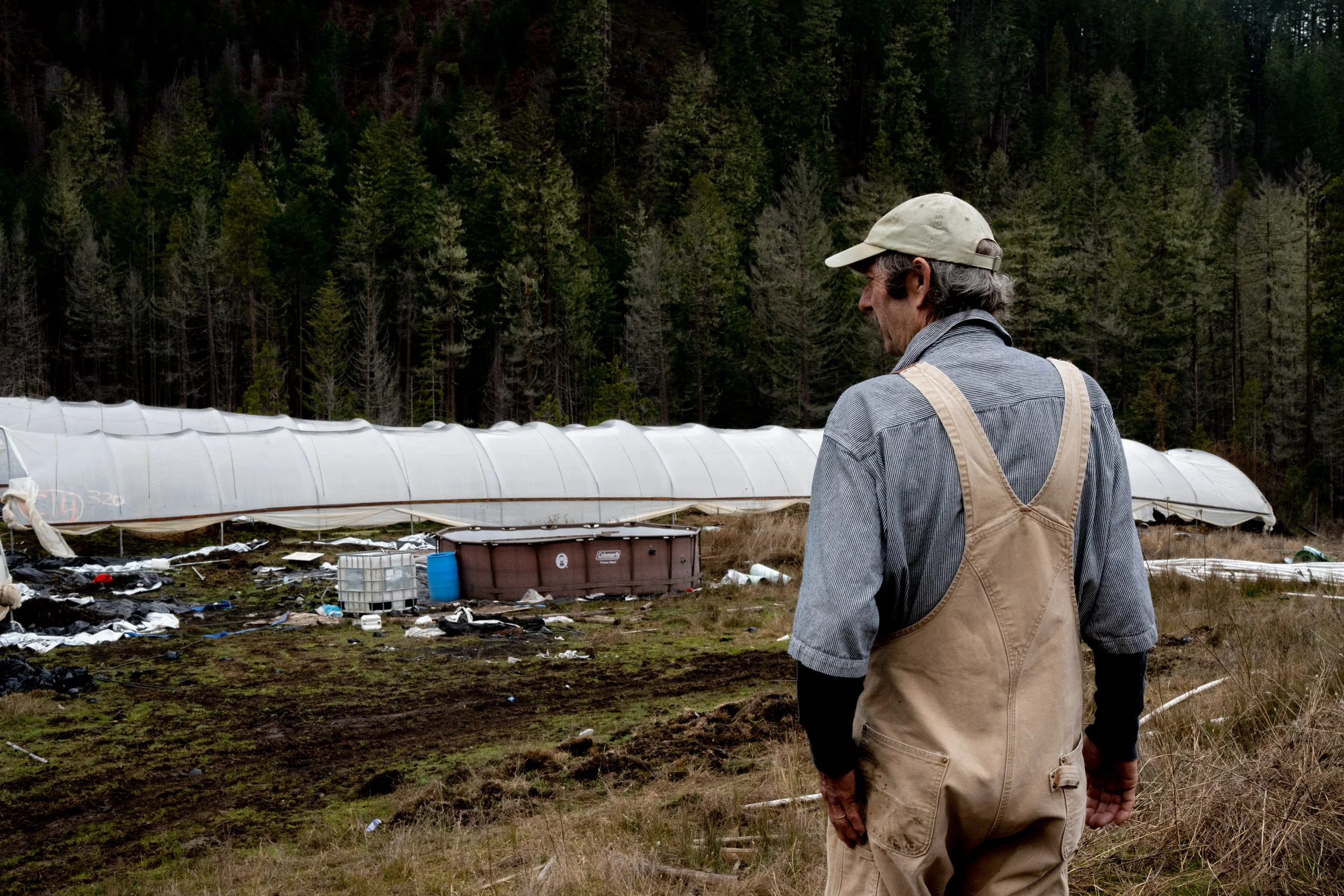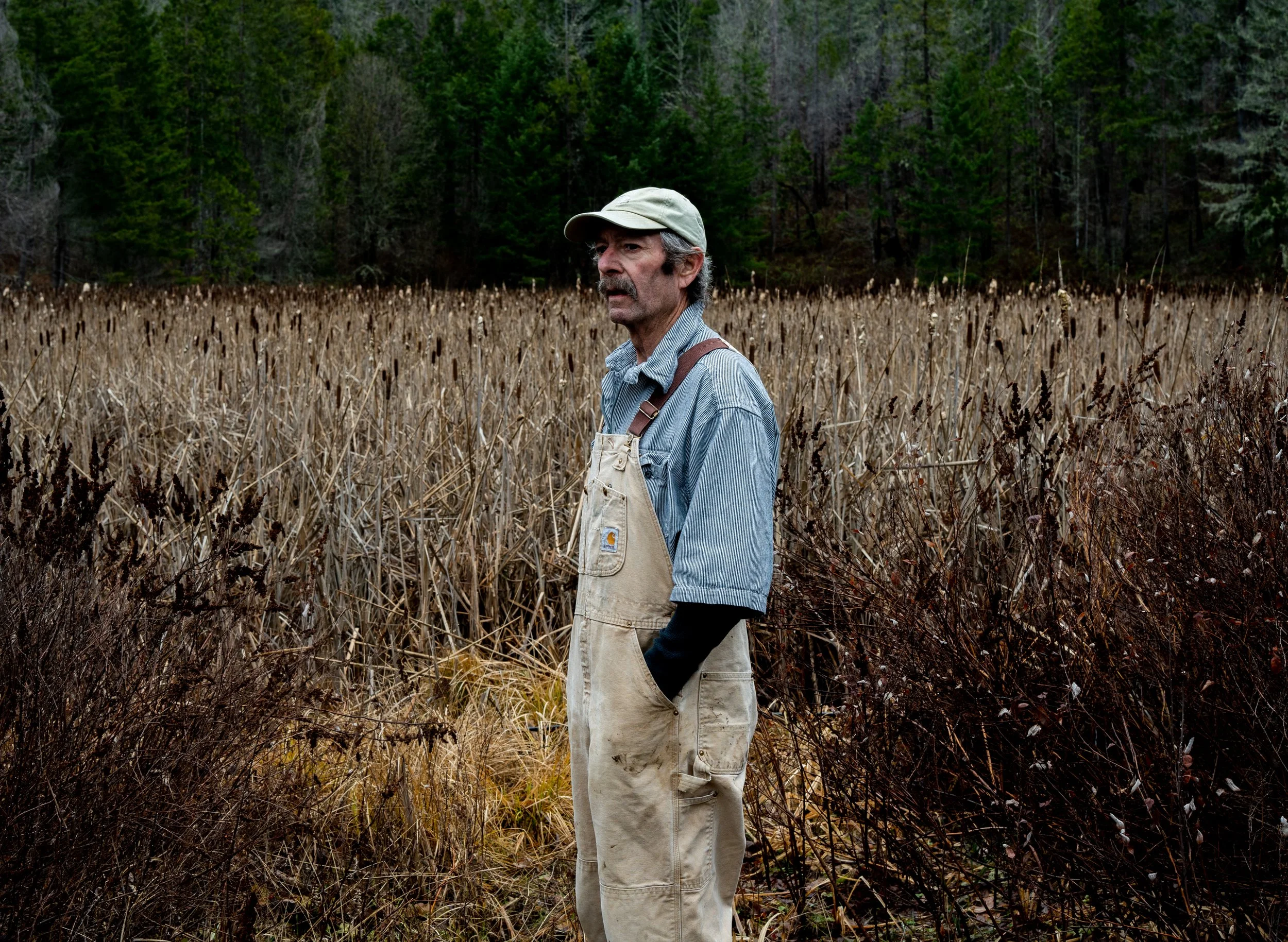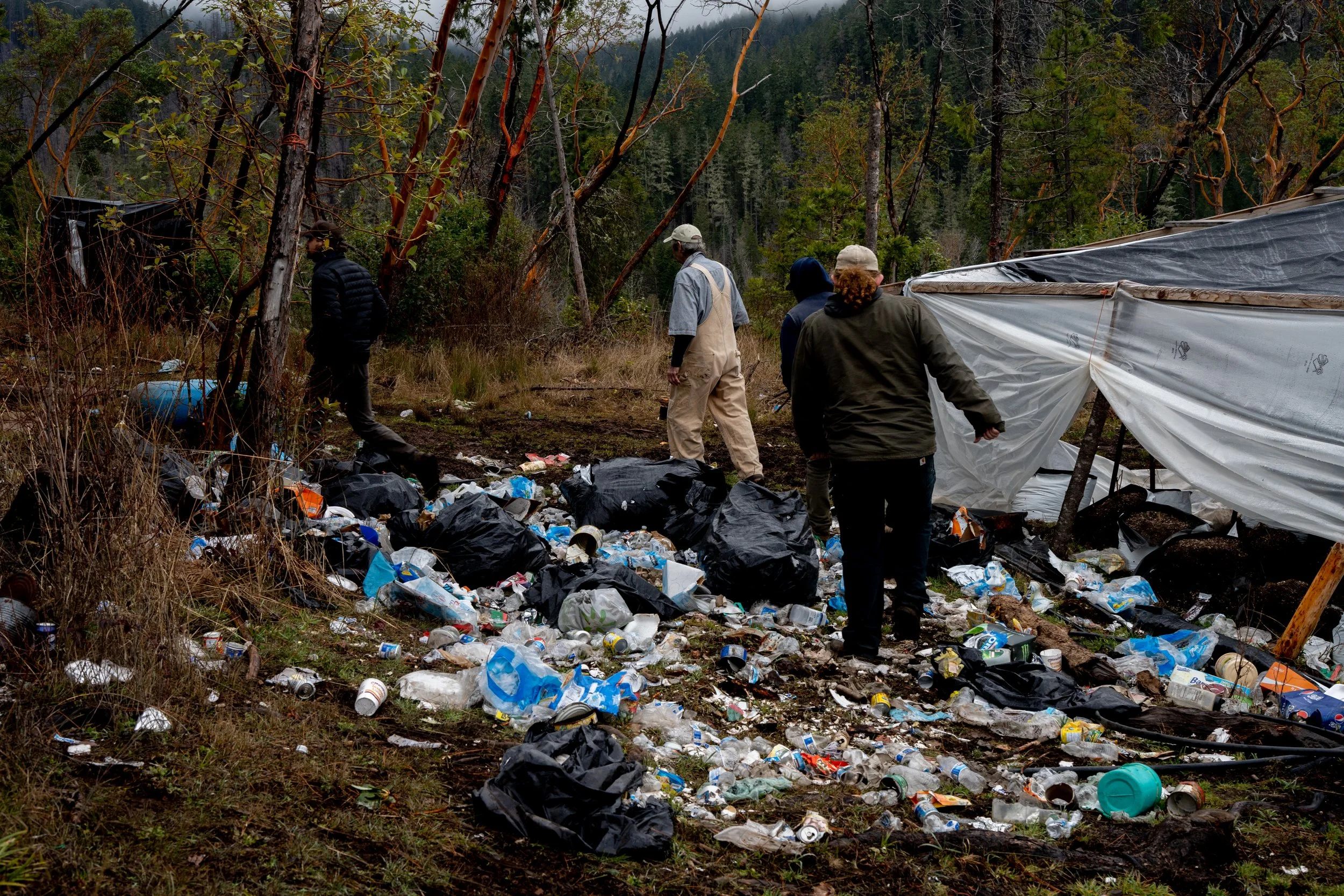An illegal marijuana operation left a remote area devastated. One man wants to bring it back to its natural state.
DREW — Greg Ellison has always felt a connection to the land.
Born and raised in Los Angeles, Ellison still describes himself and his family as “country folk”. Through the ‘80s and ‘90s, he worked in Douglas County in the timber industry, and his children and grandchildren all live in the Roseburg area.
“When I was 19, I drove all around the country,” Ellison, who is now 67, said. “I drove and drove and I kept landing in Roseburg, Oregon.”
For the past few years, however, he’s been living in the Culver City area of Los Angeles, California, caring for his girlfriend’s parents through the COVID-19 pandemic. Earlier this year, looking to buy a couple acres of land to use as an RV camping site, he contacted his friends in the logging industry for ideas of properties to purchase in the Douglas County area.
A friend of Ellison’s recommended a property near Drew, a remote area about 30 miles east of Canyonville. There was only problem: it was a former site of an illegal marijuana operation.
“He said it needs a little bit of work on it,” Ellison said. “He’s easily prone to exaggeration, so I thought, maybe it’s not that bad.”
The property, which was damaged in the 2015 Stouts wildfire, is accessed through a single dirt road stretching miles up into the hills of the Umpqua National Forest, and is covered in waste from the illegal marijuana operation, which was shut down by the Douglas Interagency Narcotics Team, or DINT, months ago.
Aside from the large hoop houses which covered the long-dead marijuana plants, cars, mountains of plastic waste, tenting supplies, mattresses, cooking utensils and empty cans were strewn across the 160-acre property.
“I got 158 more acres than I planned on,” Ellison said. “And a giant mess. But everyone needs a hobby.”
What started as a search for a small plot of land to camp on, soon turned into a mission for Ellison and his whole family — using his experience in forestry, and a lot of hard work, Ellison wants to restore the property to its natural state — an effort that could take decades to fully achieve.
“I’m really open to going with what’s going to come back naturally,” Ellison said. “Let’s bring it back to the way it was, and what it wants to be. Everybody tries to force things, you know.”
Cleaning the property is the first step. It’s no small task — trash covers the large valley on the property that’s difficult to access, and with winter weather making the ground muddy, it could be months before cleaning can even begin. Ellison plans to rent an excavator and buy a dump truck to help tear down the heaps of plastic.
“I feel like I’m in a unique position, because I know what to do here,” Ellison said. “I’m not intimidated by the amount of acreage, or the amount of mess… I see more of the beauty than the negativity.”
The next step will be making a plan. For Ellison, that means applying to the USDA’s Natural Resources Conservation Service Program, or NRCS. Doing so, he can receive funding to complete a forest management plan, which USDA soil conservationist Zachary DiMare, who works in the NRCS, says can take upwards of a year to complete.
“My job with NRCS is unique in that its motto is ‘helping people help the land,’” DiMare said. “We have some great conservation programs that can help move the needle of a piece of land like this. Even better is the long list of partners and partner programs that can help support future efforts in conservation.”
DiMare said that the process of growing the trees can take years, with Douglas Firs expected to be free-to-grow — tall enough to fight off competition from undesired plants — in approximately six years. Oak trees, which Ellison also showed an interest in planting, can take up to 20 years to reach maturity.
“[Oak trees] would be considered a legacy planting, in other words, ‘when old men plant trees in whose shade they shall never sit,’” DiMare said.
Ellison was fascinated with oak savannas, a type of plant community with oak trees in such low density that the area resembles a grassland. He said oak savannas were common in Oregon before colonizers reached the area, logging and replanting other species of trees throughout the 19th century and beyond. Forestry experts at his property said the low-density oak planting may not be possible in Ellison’s location, but bringing back the forest — in whatever way works best naturally — is what’s most important to him.
“It’ll be nice to see this place go back to how it used to be 200 years ago,” said Parker Vantez, Ellison’s 21-year-old grandson. “A nice sliver, basically a window back in time.”
Ellison hadn’t seen the property in person before he visited it on Friday, Jan. 27, the day he signed the papers to purchase it. Looking out at the heaps of trash and hoop houses longer than a football field, he said he was nervous about the daunting task — but was nevertheless dedicated to keep working.
“Can you imagine if we did nothing?” Ellison said. “You have to do something. Life takes you down paths that you never know. Once you figure that out, whatever you think that’s going to happen in five years, that ain’t going to happen. That’s just the way of it.”
Ellison knows there’s a lot of work ahead of him. It’s not what he expected for retirement, he said, but he doesn’t mind. It’s his chance to give something back to the land, and the family, that he loves.
“I hope this can be my legacy,” Ellison said. “Who else can say that?”
Written and photographed by Will Geschke. This article appeared in the February 5, 2023 edition of The News-Review.



